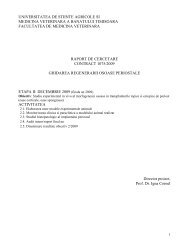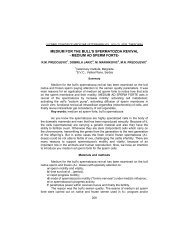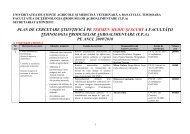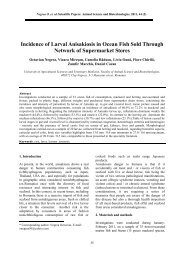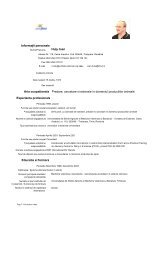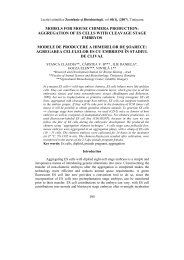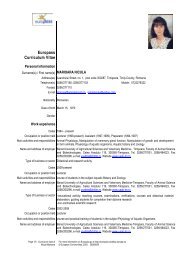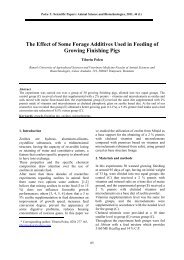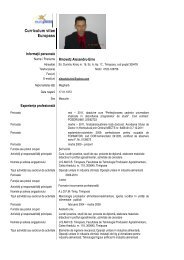journal of linguistic studies
journal of linguistic studies
journal of linguistic studies
Create successful ePaper yourself
Turn your PDF publications into a flip-book with our unique Google optimized e-Paper software.
3.2. INTRA-LINGUAL INTERFERENCE<br />
Intra-lingual interference comes from the target language itself. When a learner has<br />
already known some grammar rules about that language, some knowledge learned earlier<br />
will have certain effects on his further study.<br />
For example: *She buyed an ice-cream.<br />
Here, the speaker has already understood the past tense and verbal inflection in<br />
English, but he follows the general way to add “ed” to the verb “buy”. It is an example <strong>of</strong><br />
misusing suffixes.<br />
3.3. NON-LINGUISTIC INTERFERENCE<br />
Psychological factors and the objective environment can also lend itself to make<br />
errors.<br />
For example: Lucy told his mother a lie. It is possible that the storyteller was so<br />
shy, anxious, nervous, etc. that she commits such an error.<br />
3.4. CULTURAL INTERFERENCE<br />
The cultural background <strong>of</strong> one’s mother tongue will exert a certain effect on his<br />
second language acquisition.<br />
Say, in South Korea, it is common to greet somebody with the followings: “Where<br />
are you going?” or “Have you eaten?” But they are unacceptable in western countries.<br />
It is firmly believed that, according to psycho<strong>linguistic</strong>s transfer theory, when<br />
learning a target language, one’s mother tongue can inevitably have a certain influence on<br />
it. This kind <strong>of</strong> influence is called “transfer”. “Transfer” may be either positive or<br />
negative. “Positive transfer” could promote language acquisition accordingly, while<br />
“negative transfer” will prevent him from making progress. But under certain conditions,<br />
“negative transfer” could be transformed. Errors originate from the process <strong>of</strong> “negative<br />
transfer”, if the learner could correct his errors in time, and then this “negative transfer”<br />
will be also helpful to his language acquisition. “Language transfer” is rather<br />
unconscious. Whereupon, most learners will unconsciously understand, explain; even<br />
appraise the target language in his usual way, which is defined “pragmatic transfer”. The<br />
errors produced in this stage are inter-lingual interference or cultural interference, which<br />
are severer than intra-lingual interference. Intra-lingual interference result in some errors<br />
which usually will not break down the communication. The speaker committing such<br />
errors will leave an impression that he is not good at grammar, but if he has produced<br />
errors owing to inter-lingual interference or cultural interference, he will be considered<br />
being uneducated, <strong>of</strong>fensive, even legally reprehensible.<br />
For the cases regarding inter-lingual interference or cultural interference, we know it<br />
is grammar rules, language knowledge or study experience <strong>of</strong> one’s own mother tongue<br />
that have impact on second language acquisition. So in the teaching, we could ask the<br />
students to compare the two languages in details, such as sentence structure, expressive<br />
function, etc; help them to discriminate the pragmatic meanings <strong>of</strong> different sentence<br />
patterns; guide them to unique cultural background <strong>of</strong> the target language. We should<br />
37



